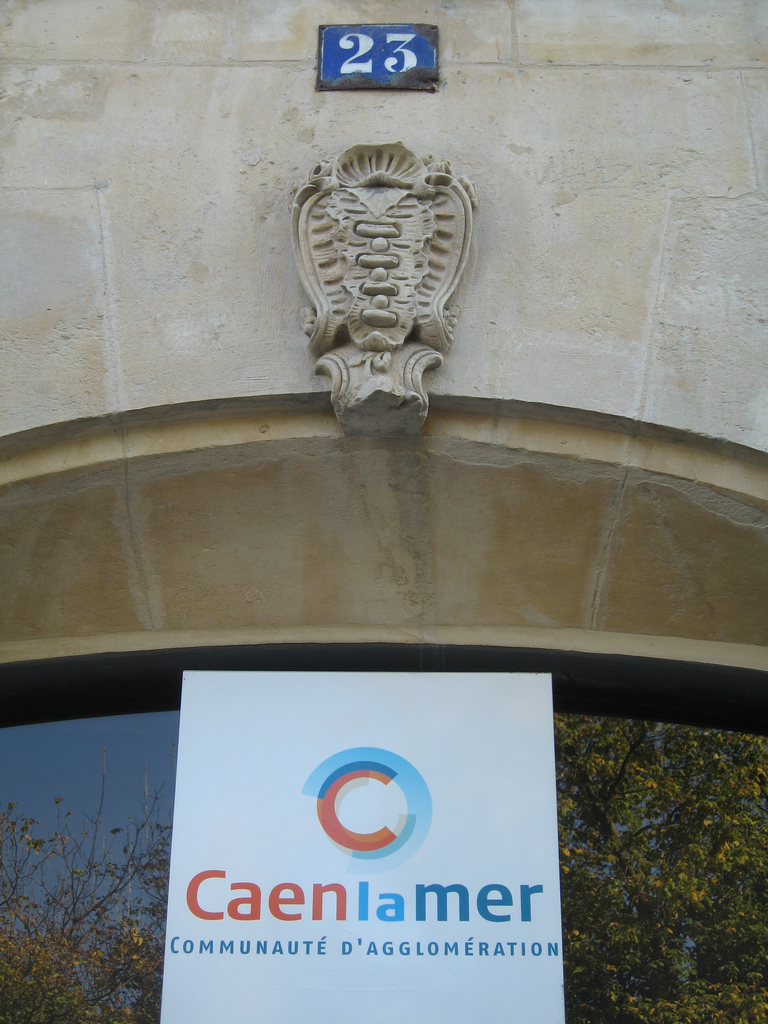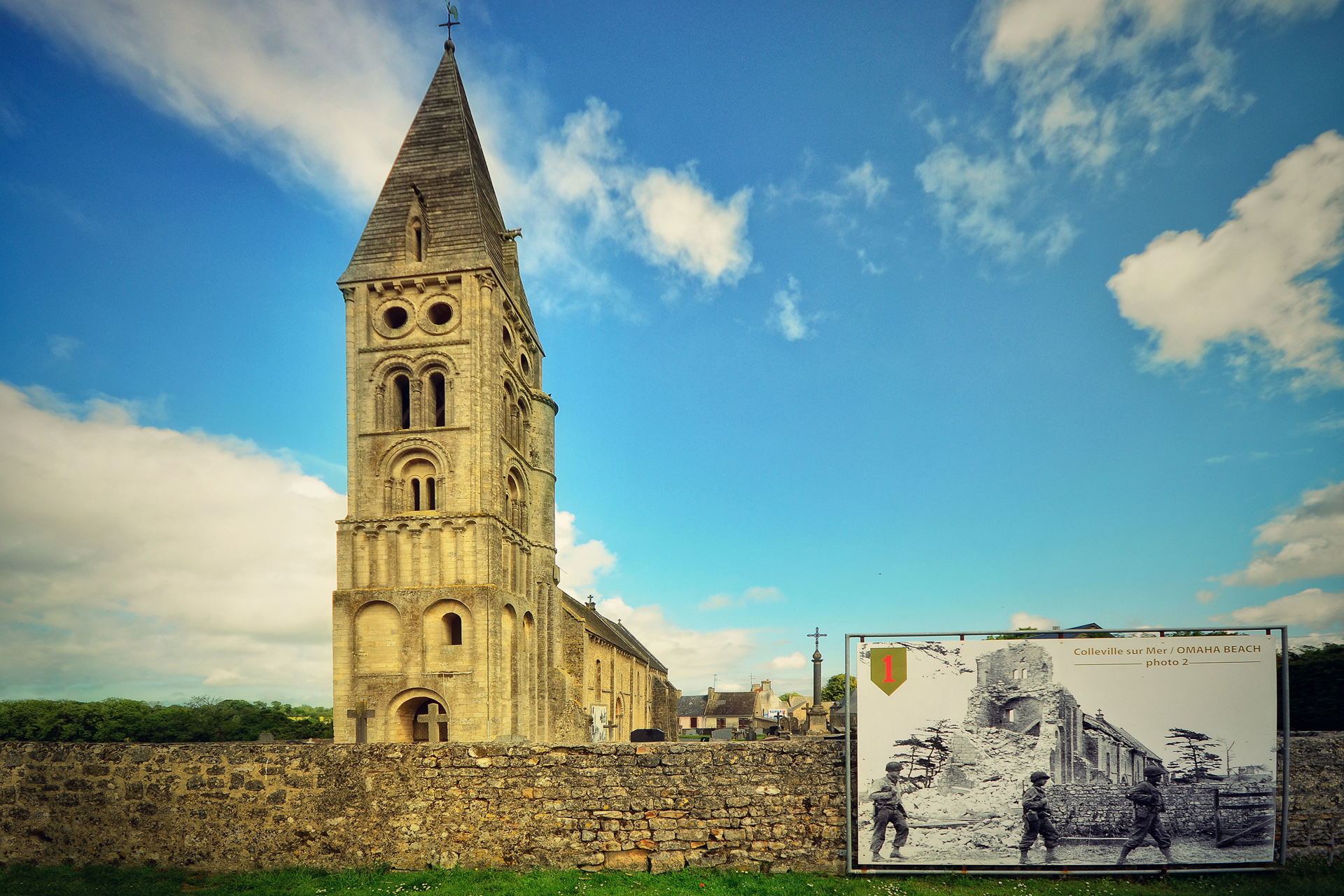|
Colleville-Montgomery
Colleville-Montgomery (; formerly ''Colleville-sur-Orne'') is a commune in the Calvados department in the Normandy region in northern France. It was known as Colleville-sur-Orne until 13 June 1946 to distinguish it from another town in the department, also in a coastal location, Colleville-sur-Mer. The new name honoured Field Marshal The 1st Viscount Montgomery of Alamein, the senior-ranking British military commander who commanded the invasion of Normandy on 6 June 1944. There are two neighbouring towns in Calvados called Sainte-Foy-de-Montgommery and Saint-Germain-de-Montgommery, but they are named for Montgomery's family ancestors. They were part of William the Conqueror's invading army in 1066 and settled in England. The town was featured in the 1962 film, '' The Longest Day'', detailing the French Resistance and their efforts on D-Day. Sights * The Church Built by Saint-Vigor, Bishop of the city of Bayeux (511-531), during the 11th and 12th centuries, it has two cho ... [...More Info...] [...Related Items...] OR: [Wikipedia] [Google] [Baidu] |
Communauté Urbaine Caen La Mer
The communauté urbaine Caen la Mer is the '' communauté urbaine'', an intercommunal structure, centred on the city of Caen. It is located in the Calvados department, in the Normandy region, northwestern France. It was created in January 2017, replacing the previous '' Communauté d'agglomération Caen la Mer'' and two communautés de communes.Arrêté préfectoral 28 July 2016 Its area is 362.9 km2. Its population was 268,470 in 2018, of which 105,512 in Caen proper. History The communauté urbaine had its origins in the creation in 1990 of a ''District of Greater Caen'' (DGC) which consisted of 18 communes. Since then the grouping transformed itself in 2002 into an Agglomeration called the ''Communauté d'agglomération du Grand Caen' ...[...More Info...] [...Related Items...] OR: [Wikipedia] [Google] [Baidu] |
Hillman Fortress
The Hillman Fortress (french: Site fortifié Hillman, german: Widerstandsnest 17) was a German bunker complex and command post built during the Second World War and located near Colleville-Montgomery in Normandy, France. The bunker complex, designated as Hill 61 and codenamed ''Hillman'' by the British, was attacked on 6 June 1944 by the Suffolk Regiment and the fortress finally surrendered the following morning. The delay in taking the bunker complex has been cited as a reason for the Allies not completing their major D-Day objective of taking Caen. The bunkers are now open as a museum and run by local volunteers. Construction In 1942, towards the southern part of Colleville-Sur-Orne (renamed Colleville-Montgomery after the war), the Organisation Todt built a 24-hectare bunker complex consisting of 18 bunkers including two H608 command post bunkers (with armoured observation cupolas) and a H605 bunker for artillery guns. It was designated at Widerstandsnest 17 (resistance ... [...More Info...] [...Related Items...] OR: [Wikipedia] [Google] [Baidu] |
Communes Of Calvados (department)
The following is a list of the 528 communes of the Calvados department of France. The communes cooperate in the following intercommunalities (as of 2020):BANATIC Périmètre des EPCI à fiscalité propre. Accessed 3 July 2020. * Communauté urbaine Caen la Mer * Communauté d'agglomération Lisieux Normandie
Communauté d'agglomération Lisieux Normandie is the '' communauté d'agglomération'', an intercommunal structure, centred on the town of Lisieux. It is ...
[...More Info...] [...Related Items...] OR: [Wikipedia] [Google] [Baidu] |
Communes Of The Calvados Department
The following is a list of the 528 communes of the Calvados department Department may refer to: * Departmentalization, division of a larger organization into parts with specific responsibility Government and military *Department (administrative division), a geographical and administrative division within a country, ... of France. The communes cooperate in the following intercommunalities (as of 2020):BANATIC Périmètre des EPCI à fiscalité propre. Accessed 3 July 2020. * Communauté urbaine Caen la Mer * Communaut� ... [...More Info...] [...Related Items...] OR: [Wikipedia] [Google] [Baidu] |
Colleville-sur-Mer
Colleville-sur-Mer (, literally ''Colleville on Sea'') is a commune in the Calvados department in Normandie region in northwestern France. History It was originally a farm owned by a certain ''Koli'', a Scandinavian settler in the Middle Ages. It shares the same etymology as the other Colleville in Normandy. During the conquest of England by William the Conqueror or following it, Gilbert de Colleville was given lands in England, it was from this Knight that the modern de Colville/Colvin/(Calvin in France,) family would develop, also including Clan Colville in Scotland and the Barony de Colville, of Castle Bytham in England. The beach next to the coastal village was one of the principal beachheads during the Normandy landings on 6 June 1944, designated Omaha Beach. Population Sights * Normandy American Cemetery and Memorial is located in Colleville-sur-Mer. * Notre-Dame de l'Assomption de Colleville: dated to the 12th or 13th century, a historical monument si ... [...More Info...] [...Related Items...] OR: [Wikipedia] [Google] [Baidu] |
Bernard Montgomery, 1st Viscount Montgomery Of Alamein
Field Marshal Bernard Law Montgomery, 1st Viscount Montgomery of Alamein, (; 17 November 1887 – 24 March 1976), nicknamed "Monty", was a senior British Army officer who served in the First World War, the Irish War of Independence and the Second World War. Montgomery first saw action in the First World War as a junior officer of the Royal Warwickshire Regiment. At Méteren, near the Belgian border at Bailleul, he was shot through the right lung by a sniper, during the First Battle of Ypres. On returning to the Western Front as a general staff officer, he took part in the Battle of Arras in AprilMay 1917. He also took part in the Battle of Passchendaele in late 1917 before finishing the war as chief of staff of the 47th (2nd London) Division. In the inter-war years he commanded the 17th (Service) Battalion, Royal Fusiliers and, later, the 1st Battalion, Royal Warwickshire Regiment before becoming commander of the 9th Infantry Brigade and then General officer c ... [...More Info...] [...Related Items...] OR: [Wikipedia] [Google] [Baidu] |
Arch
An arch is a vertical curved structure that spans an elevated space and may or may not support the weight above it, or in case of a horizontal arch like an arch dam, the hydrostatic pressure against it. Arches may be synonymous with vaults, but a vault may be distinguished as a continuous arch forming a roof. Arches appeared as early as the 2nd millennium BC in Mesopotamian brick architecture, and their systematic use started with the ancient Romans, who were the first to apply the technique to a wide range of structures. Basic concepts An arch is a pure compression form. It can span a large area by resolving forces into compressive stresses, and thereby eliminating tensile stresses. This is sometimes denominated "arch action". As the forces in the arch are transferred to its base, the arch pushes outward at its base, denominated "thrust". As the rise, i. e. height, of the arch decreases the outward thrust increases. In order to preserve arch action and prevent coll ... [...More Info...] [...Related Items...] OR: [Wikipedia] [Google] [Baidu] |
Romanesque Architecture
Romanesque architecture is an architectural style of medieval Europe characterized by semi-circular arches. There is no consensus for the beginning date of the Romanesque style, with proposals ranging from the 6th to the 11th century, this later date being the most commonly held. In the 12th century it developed into the Gothic style, marked by pointed arches. Examples of Romanesque architecture can be found across the continent, making it the first pan-European architectural style since Imperial Roman architecture. The Romanesque style in England and Sicily is traditionally referred to as Norman architecture. Combining features of ancient Roman and Byzantine buildings and other local traditions, Romanesque architecture is known by its massive quality, thick walls, round arches, sturdy pillars, barrel vaults, large towers and decorative arcading. Each building has clearly defined forms, frequently of very regular, symmetrical plan; the overall appearance is one of simpli ... [...More Info...] [...Related Items...] OR: [Wikipedia] [Google] [Baidu] |
Gothic Architecture
Gothic architecture (or pointed architecture) is an architectural style that was prevalent in Europe from the late 12th to the 16th century, during the High and Late Middle Ages, surviving into the 17th and 18th centuries in some areas. It evolved from Romanesque architecture and was succeeded by Renaissance architecture. It originated in the Île-de-France and Picardy regions of northern France. The style at the time was sometimes known as ''opus Francigenum'' (lit. French work); the term ''Gothic'' was first applied contemptuously during the later Renaissance, by those ambitious to revive the architecture of classical antiquity. The defining design element of Gothic architecture is the pointed or ogival arch. The use of the pointed arch in turn led to the development of the pointed rib vault and flying buttresses, combined with elaborate tracery and stained glass windows. At the Abbey of Saint-Denis, near Paris, the choir was reconstructed between 1140 and 114 ... [...More Info...] [...Related Items...] OR: [Wikipedia] [Google] [Baidu] |
Stained Glass
Stained glass is coloured glass as a material or works created from it. Throughout its thousand-year history, the term has been applied almost exclusively to the windows of churches and other significant religious buildings. Although traditionally made in flat panels and used as windows, the creations of modern stained glass artists also include three-dimensional structures and sculpture. Modern vernacular usage has often extended the term "stained glass" to include domestic leadlight, lead light and ''objet d'art, objets d'art'' created from came glasswork, foil glasswork exemplified in the famous lamps of Louis Comfort Tiffany. As a material ''stained glass'' is glass that has been coloured by adding Salt (chemistry), metallic salts during its manufacture, and usually then further decorating it in various ways. The coloured glass is crafted into ''stained glass windows'' in which small pieces of glass are arranged to form patterns or pictures, held together (traditionally) by ... [...More Info...] [...Related Items...] OR: [Wikipedia] [Google] [Baidu] |
Communes Of France
The () is a level of administrative division in the French Republic. French are analogous to civil townships and incorporated municipalities in the United States and Canada, ' in Germany, ' in Italy, or ' in Spain. The United Kingdom's equivalent are civil parishes, although some areas, particularly urban areas, are unparished. are based on historical geographic communities or villages and are vested with significant powers to manage the populations and land of the geographic area covered. The are the fourth-level administrative divisions of France. vary widely in size and area, from large sprawling cities with millions of inhabitants like Paris, to small hamlets with only a handful of inhabitants. typically are based on pre-existing villages and facilitate local governance. All have names, but not all named geographic areas or groups of people residing together are ( or ), the difference residing in the lack of administrative powers. Except for the municipal arr ... [...More Info...] [...Related Items...] OR: [Wikipedia] [Google] [Baidu] |
World War II
World War II or the Second World War, often abbreviated as WWII or WW2, was a world war that lasted from 1939 to 1945. It involved the World War II by country, vast majority of the world's countries—including all of the great powers—forming two opposing military alliances: the Allies of World War II, Allies and the Axis powers. World War II was a total war that directly involved more than 100 million Military personnel, personnel from more than 30 countries. The major participants in the war threw their entire economic, industrial, and scientific capabilities behind the war effort, blurring the distinction between civilian and military resources. Air warfare of World War II, Aircraft played a major role in the conflict, enabling the strategic bombing of population centres and deploying the Atomic bombings of Hiroshima and Nagasaki, only two nuclear weapons ever used in war. World War II was by far the List of wars by death toll, deadliest conflict in hu ... [...More Info...] [...Related Items...] OR: [Wikipedia] [Google] [Baidu] |




.jpg)

